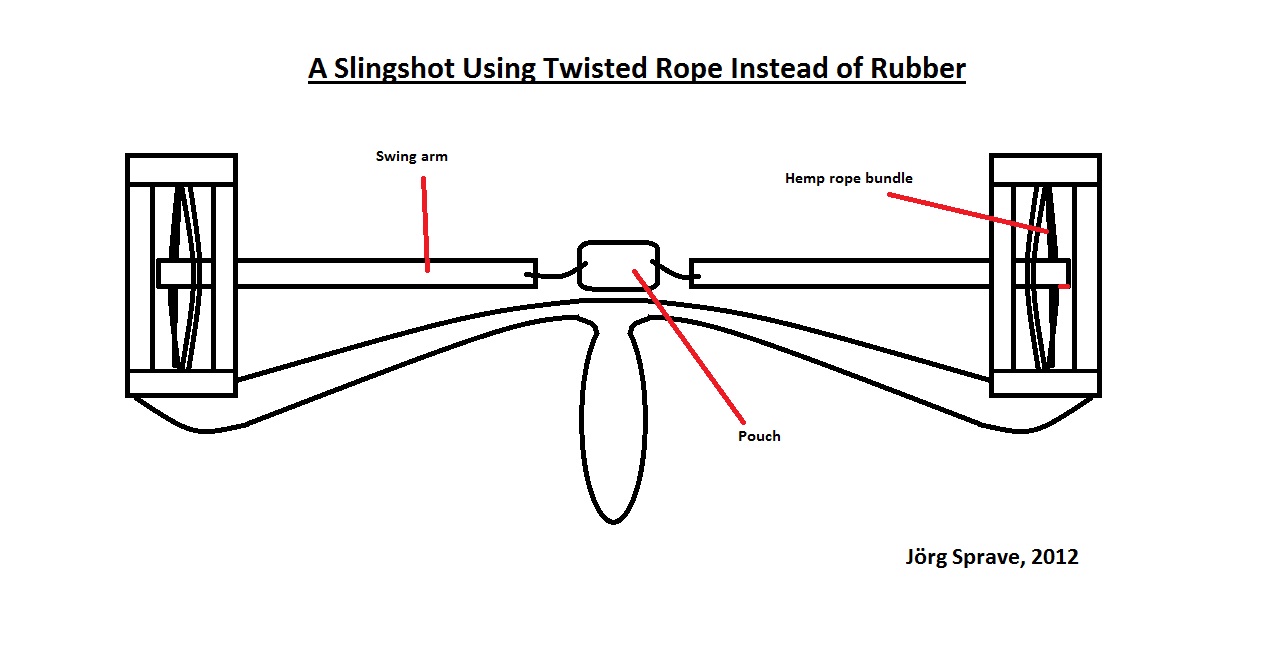Warhammer1 wrote:Hey baileus.
In the inswinger outswinger wiki page, you post that the arm constantly is under acceleration when in actuallity it slows down almost imperceptedly.
I'm speaking of the rotational speed of the arm. I take it you're speaking of the
forward speed of the arm's tips, right? If not, please explain in more detail.
On the Hatra design (original find) the arms were at rest postion at a 12 oclock position and full draw is 120. If you have followed my RAT postings on the subject I described a "lull" that occurs when arms horizontally opposed.
Later a mathematician plotted limb tip speed to string speed, thus proving up my theory.
Did he plot
a) relation of the limb tip speed to bowstring speed (with acceleration et al taken into account)
b) relation of arm rotation (degrees) to the forward movement of the bowstring (static modeling)
Latter (b) is easy to calculate or plot with CAD, former (a) is more difficult, especially if you want
real speed figures (instead of just relative numbers).
On the Orsova design(with overdraw past the 12 oclock rest postion), there is actually two spots where that "lull" should occur - namely the normal 12 oclock rest position. I havent found a mathematician to work that out for me.
When using either as a rock flinger with a heavier weight it should not result in a sine wave in the string, but if too light a projectile is used from a 120 degree rotation release point, the string halves will accelerate toward each other and at the point where the string is normally slackest (90 degrees from rest) the strings will have enough energy and momentum to actually cross over each other during this "lull" and then have to straighten out as acceleration of limb and string begins again.
In other words, you're saying that the halves of the bowstring are not going directly forward (towards the target), but also towards each other/the stock? If so, it makes sense.
Here the strings direction changes from being at its widest, to its closest, and then moving apart again.
You mean the distance between the halves of the bowstring (at some point), not direction, right? Or the distance between the tips of the arm? Or the angle between the halves of the bowstring? Frankly, you lost me here...
With Nicks new extended rotation (22% jump in speed) the strings direction must again change direction where it is joined to the lever or limb. Only the middle of the string continues to accelerate as vertical acceleration has ended completely at the 12 oclock position and only a horizontal movement is available. Once past 12 oclock the the direction of the levers has actually reversed and headed back towards the user.
Yeah, that's what happens after the angle between the bowstring and the arms is past 90 degrees. However, in static models the bowstring movement is largest (in relation to arm rotation) after that phase. So, unless some nasty dynamic phenomenom kicks in, this last phase of arm rotation is very important in getting good velocities out of the ballista and should improve efficiency especially with light bolts.
IMHO, this should also result in funky business, but we will have to wait for the new arms on Nicks machine. He has also now got a 1200 frame per minute video cam. so we should be able to see things more clearly, and exactly what does happen.
The videos from that cam will be very interesting...
Of course its very easy to see on my low powered machines, but I like to have a second confirmation before publicly posting actual results or claims.
Why hold back? Videos with this "lull" phenomenom would definitely interest me.
So far I believe I am the only "ballista freak" doing extensive research and testing using much shorter arms expressed as a ratio of arm or lever length to axle to axle length.
While some figure I use the compounding design to change limb tip to string speed (which it does), it is far more productive controlling the angle of pull on the string which is all important.
All bows and ballistas are about is compounding the velocity, i.e. converting relatively low speed of the arm into a much higher velocity of the projectile. The same goes for pretty much all man-powered projectile weapons. Those who claim otherwise don't have a clue

.
As I'm doing a
scientific reconstruction of the cheiroballistra, I'm not at this point interested in trying to optimize the design, except within the limits that the text allows. I can tune it later as much as I want, but not right now. The original text seems very accurate, provided that one does not start changing numbers; doing that causes issues elsewhere.
The interesting thing about the
cheiroballistra is that it needs to have 150-170 degree rotation or the draw length will be too short. Some amount of adjustment is possible by adjusting the length of the hooks (in the arms), the claw (which grasps the bowstring) and the handle (which apparently locks the slider in place). Still, reducing the angle of rotation beyond 150 degrees is challenging.
Anyways, last week I forged most of the remaining metal parts of the cheiroballistra, and the stock/slider combo is almost ready. Next I'll start assembling the pieces and then go for yet another round of forging. Hopefully I got the machine ready in a couple of month. Then I need to go butcher some reindeer/moose legs/backs to get tendons and make lots of sinew rope. It's not gonna be pretty, but necessary for science

.






 Don't Stop...Don't Stop till you get Enough...Don't Stop...Don't Stop till you get Enough...No
Don't Stop...Don't Stop till you get Enough...Don't Stop...Don't Stop till you get Enough...No














 Private messages
Private messages